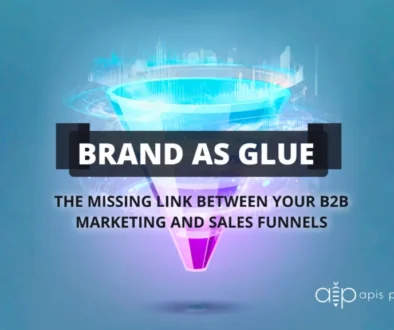Best Practices for Sponsored Content | LinkedIn, Facebook, and Instagram Ad Tips
LinkedIn ads
LinkedIn ads help your business with three types of marketing objectives:
Awareness: Create more awareness of your company or brand.
Consideration: Drive website visits, increase engagement, or encourage video views.
Conversions: Collect leads and drive website conversions.
Audience considerations: LinkedIn is much more business-oriented than the other social networks in this post. It offers targeting options based on professional qualifications like job title and seniority.
You can choose from several different types of LinkedIn ads.
Sponsored Content
Sponsored Content ads appear in the news feed on both desktop and mobile. They’re used to get your content in front of a larger audience and showcase your brand expertise.
Quick tip: Headlines under 150 characters have the best engagement. Larger images get higher click-through rates. LinkedIn recommends an image size of 1200 x 627 pixels.

Linkedin Sponsored Content
Sponsored InMail
Sponsored InMail is similar to email marketing, except that the messages go directly to users’ LinkedIn inboxes. However, Sponsored InMail has an interesting unique feature. Users only receive ad messages while they are active on LinkedIn. That means messages don’t sit around getting stale.
Quick tip: Short body text (under 500 characters) gets the highest click-through rate. The top five performing calls-to-action for Sponsored InMail are:
Try
Free
Today
Click
Apply
Text Ads
Text ads are small ad units that appear at the top and the right of the LinkedIn news feed. They only appear to desktop users, not on mobile devices. Despite the name, text ads can actually include a thumbnail image of 50 x 50 pixels.

Quick tip: Show a human face. Profile images work better than logos or pictures of objects.
Facebook ads
Facebook ads are designed to help you achieve one of three broad types of campaign objectives:
Awareness: Build brand awareness or increase reach.
Consideration: Send traffic to your website, increase engagement, encourage app installs or video views, generate leads, or encourage people to communicate with you on Facebook Messenger.
Conversion: Create online conversions, make catalog sales, or drive foot traffic to offline stores.
Audience considerations: Facebook is popular across demographics and offers detailed targeting options. This makes it a great platform to get started with social media advertising.
Photo ads
In addition to a photo, Facebook photo ads include 125 characters of text plus a headline and link description. They can also include a call-to-action button like Shop Now or Send Message.
You can create your photo ad in Facebook Business Manager, or simply promote a post with an image from your Facebook Page.
Quick tip: Facebook photo ads work really well for showcasing new products or services. Show people using your product, rather than a simple photo of the product itself.

Video ads
Facebook video ad options range from short mobile video ads up to 240-minute promoted videos designed to be watched on desktop. With so many options, it’s critical to have solid goals and understand who your target market is and where your video will reach them.
Facebook video ads can work well in conjunction with a TV ad campaign. Even if T.V. is not part of your marketing mix, video ads can be a great way to draw people in. Use compelling visuals that highlight the best parts of your brand.
Quick tip: Short videos tend to have higher completion rates. However, if you’ve got a compelling message you can go a little longer.
Rareform uses mobile Facebook video ads to highlight its unique value proposition. The company makes bags out of recycled billboards. Their video ads get a 19% higher return than ads without video.

Stories ads
In this full-screen format, photos display for six seconds, and videos can last up to 15 seconds.
You can’t specifically select Facebook Stories ads on their own. They’re included as a possible placement when you select Automatic Placements when creating your ad.
Quick tip: Stories only last for 24 hours, so this is a great format for in-the-moment marketing like limited-time offers. The majority of people Facebook surveyed said they wanted Stories ads to be “quick and easy to understand.” Keep things simple.
For example, the clothing brand tentree used a Facebook Stories slideshow ad with six photos to show off six different men’s hats. The campaign had a 70% lower cost per product page view than other digital ads.

Carousel ads
A carousel ad lets you include up to 10 images or videos, each with their own link, all in one ad.
Carousel ads work well to showcase different features of a product, or to explain a step-by-step process. They’re also a great way to present multiple products.
Quick tip: Use the different elements in your carousel ad together to present a compelling, effective story or message.

Slideshow ads
A slideshow is an ad that creates a video from several static images—your own or stock images that Facebook provides.
Slideshows offer the compelling motion of video, but require no video-specific resources to create. If you’re not ready to try video ads but want to move beyond static photos, slideshow ads are a great option.
Happy Socks uses slideshow ads to show off their colorful product in an eye-catching way.

Collection ads
A collection ad highlights your products right in the Facebook feed. The ad includes a cover photo or video plus product images with pricing and other details. This allows people to learn more about your product without leaving Facebook. When someone clicks on the ad, they go to an Instant Experience (see below).
Quick tip: Collection ads work especially well for retail and travel brands.
Instant Experience ads
Formerly called Carousel ads, these are full-screen interactive ads for the mobile feed. An Instant Experience ad can include up to 20 images or up to two minutes of video. You can include a call-to-action button with up to 30 characters of text.
Instant Experiences also include interactive features like tilt to pan.

Quick tip: Instant Experience ads can also be used to collect customer or lead information using an instant form.
Messenger ads
Messenger ads are simply Facebook ads placed on the home screen of the Messenger app. You can use them to encourage people to connect with your business on Messenger, but they can also link to your site.
Here’s how a Messenger ad looks in the mobile interface:

Quick tip: You can use Messenger ads to restart conversations that have trailed off. Use a custom audience of people who have previously messaged your business.
Lead generation ads
Facebook lead generation ads are mobile-only ads that include pre-populated forms. This makes it easy for people to:
- sign up for your newsletter
- request a free trial
- ask for a quote
They’re a great tool if you’re looking for leads to pass along to your sales team, or to build your online sales funnel.
Quick tip: Ask for the minimum amount of information you need to process leads effectively, to maximize completion.
Instagram ads
Facebook owns Instagram. So it’s not surprising that Instagram ads support the same three broad categories of campaign objectives as Facebook ads:
Awareness
Consideration
Conversion
Audience considerations: Instagram is most popular with millennials. Plenty of Generation Xers also use the platform.
The specific Instagram ad types also mirror four of the Facebook ads types:
Photo
Video
Carousel
Collection
You can create each type of ad for either the main Instagram feed, or for Instagram Stories.
Photo and video ads
Your Instagram photo or video will look like a regular Instagram post—except that it will say Sponsored in the top right. Depending on your campaign objective, you may also be able to add a call-to-action button.
Quick tip: Make sure your photo and video ads are consistent in style with the organic posts you share on Instagram. This helps viewers recognize that the ad is from your brand.
Try testing video ads against photo ads using the same content. America’s Test Kitchen found that adding motion to its ads resulted in a 45% increase in leads over the same ad using just a photo.

Carousel ads
In an Instagram carousel ad, viewers swipe to scroll through different images.
Quick tip: Make sure the images you use in your carousel ad are visually similar and tied together by a common theme. It shouldn’t be jarring to swipe between the different photos in the ad.
Look at this Carousel ad for Snag Tights. The similar images and consistent bar of text across each photo clearly connect the components of the ad and help to tell a consistent story.


Collection ads
Just like Facebook Collection ads, these feature a cover image or video plus several product shots. Clicking on the ad directs the user to an Instant Experience.
Quick tip: Instagram Collection ads don’t include a headline, but they do allow up to 90 characters of text.
Instagram Stories ads
Instagram Stories ads can use photos or videos up to 120 seconds long. These ads display in full-screen format between people’s stories.
Quick tip: Add interactive elements to Story ads for the best performance.
Dunkin’ found in an A/B test that a Story ad with a poll sticker had a 20% lower cost per video view. Plus, 20% of people who watched the video voted in the poll. (On the very important topic of which is better: donuts or fries.)





